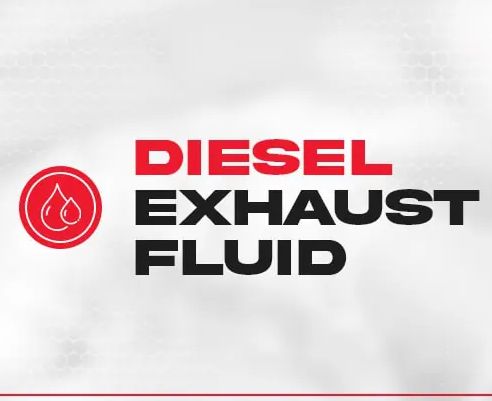
Diesel exhaust fluid (DEF) is a liquid solution that is used in selective catalytic reduction (SCR) systems to reduce emissions from diesel engines. DEF is injected into the exhaust system of diesel vehicles, where it converts nitrogen oxide (NOx) emissions into harmless nitrogen and water through a chemical reaction using a catalyst. DEF is generally used in trucks, buses and other heavy-duty diesel vehicles.
The Diesel Exhaust Fluid (DEF) Market is estimated for US$ 8.5 billion for 2023 for the forecast period 2023-2030, as highlighted in a new report published by Coherent Market Insights.
Market Dynamics:
DEF demand is driven by two key factors - increasing stringency in emission norms and growing diesel vehicle parc. stringent emission regulations such as Euro 6 and Bharat Stage VI norms have made SCR systems mandatory for diesel passenger vehicles. This is increasing the adoption of DEF technology across light commercial vehicles as well. Additionally, rising sales of diesel trucks and buses are expanding the fleet of vehicles requiring DEF. Between 2023-2030, the global diesel commercial vehicle production is estimated to grow at 3-4% annually, thereby propelling DEF consumption. While stringent emission laws are driving DEF adoption, its handling and logistics challenges could hamper the market growth to some extent over the forecast period.
#Diesel Exhaust Fluid Market Drivers
##Stringent Emission Regulations Driving Adoption of Diesel Exhaust Fluid
Government regulations around the world have been getting increasingly stringent in limiting emissions from diesel vehicles. Diesel engines emit nitrogen oxides that require after-treatment systems like selective catalytic reduction (SCR) using diesel exhaust fluid like urea to convert nitrogen oxides into harmless nitrogen and water. The tightening emission standards are driving automakers and commercial vehicle manufacturers to add SCR technology in more of their diesel vehicles, generating strong demand for diesel exhaust fluid. Many regions have implemented Euro 6 standards that have nearly cut nitrogen oxide emissions from diesel vehicles by 80%. This is a major driver for the diesel exhaust fluid market.
##Growing Diesel Vehicle Population Boosting Requirements
Along with stringent emission norms, the population of diesel vehicles around the world has been rising steadily over the years. Diesel cars and commercial vehicles offer better fuel efficiency than petrol vehicles. As fuel prices fluctuate heavily, diesel remains a popular choice for transportation and logistics sectors. The growing diesel fleet size directly impacts the consumption of diesel exhaust fluid which is an essential component for SCR after-treatment systems. Countries with a high concentration of freight transport and commercial vehicles represent large market opportunities for diesel exhaust fluid manufacturers and suppliers.
#Diesel Exhaust Fluid Market Restrain
##Price Volatility of Raw Materials Hampering Market Growth
Urea is the primary raw material used in the production of diesel exhaust fluid. The urea market has been experiencing significant price volatility due to various global economic and geopolitical factors influencing commodity prices. Raw material price fluctuations pose major challenges for diesel exhaust fluid manufacturers in maintaining stable production costs. Frequent fluctuations in urea prices can also impact the operating costs of diesel vehicle owners. Uncertainty in raw material pricing acts as a constraint on the potential growth of the diesel exhaust fluid market.
#Diesel Exhaust Fluid Market Opportunity
##Alternative Raw Materials Presenting New Prospects
While urea remains the predominant raw material currently, research & development efforts are evaluating more sustainable alternatives such as ammonia and bio-urea. For example, bio-urea made from liquefied CO2 emissions offers environmental benefits. It can potentially provide a cost-competitive and locally sourced substitute for mined urea. Advancements in alternative raw material technologies may open up new growth avenues for innovative diesel exhaust fluid formulations. Supply chain stability and energy independence are other advantages of moving away from conventionally produced urea. This presents lucrative opportunities for startups and manufacturers focused on bringing alternative diesel exhaust fluid products to the market.
#Diesel Exhaust Fluid Market Trends
##Adoption of Advanced SCR Systems Driving Innovation
Leading automakers are progressively implementing advanced SCR systems for improved emissions reduction performance. Features like fast light-off catalytic converters, dual dosing, and sophisticated dosing control units are becoming prevalent. This upholds the use of diesel exhaust fluid even under low-load driving conditions. At the same time, SCR technology providers seek ways to reduce consumable costs through innovations. Advanced formulations enabling better oxidation at lower dosing rates as well as miniaturized dosing modules are newer trends. The diesel market's shift towards advanced abatement solutions works favorably for the diesel exhaust fluid industry to bring upgraded products aligned with evolving technology requirements.























